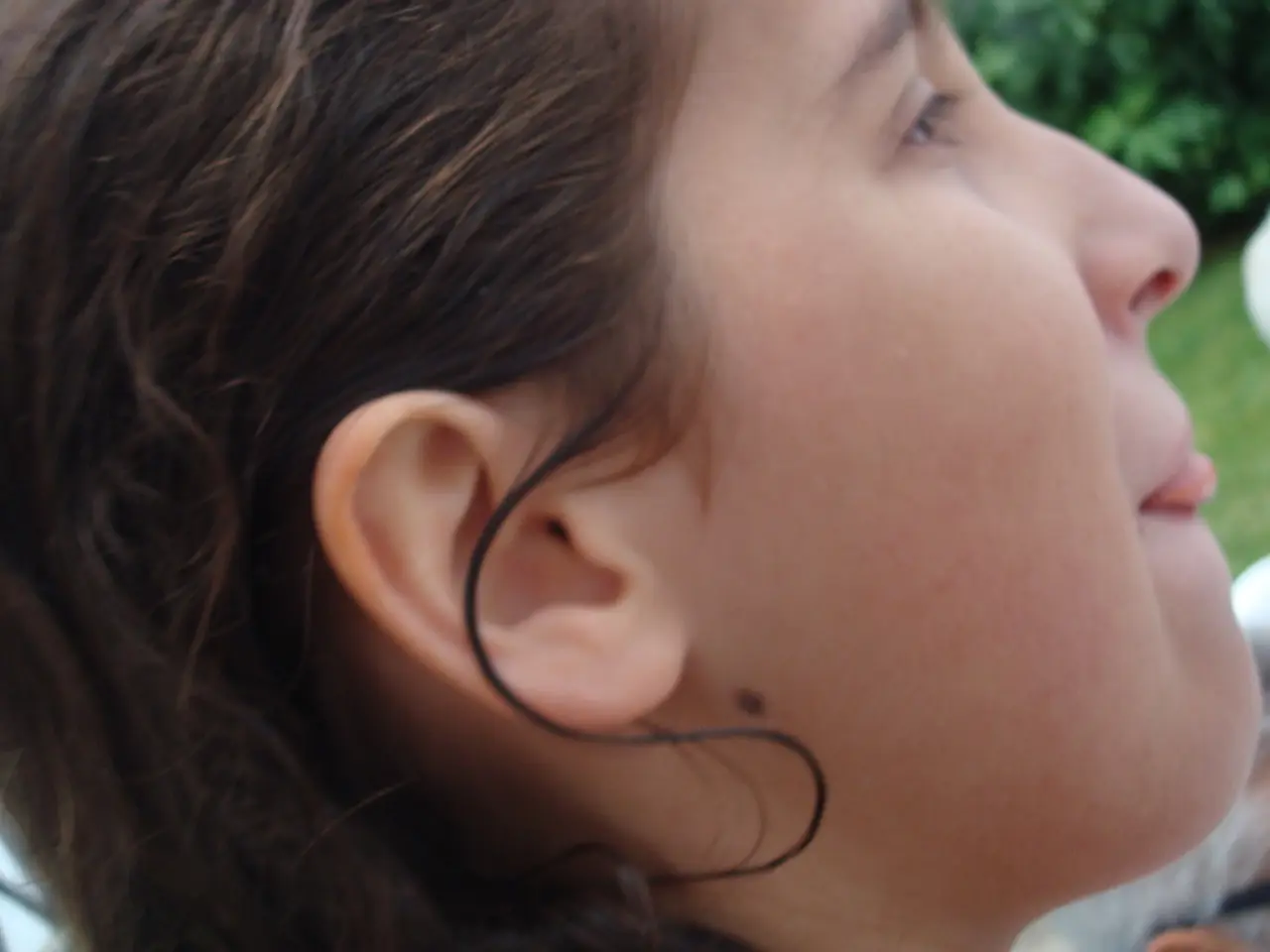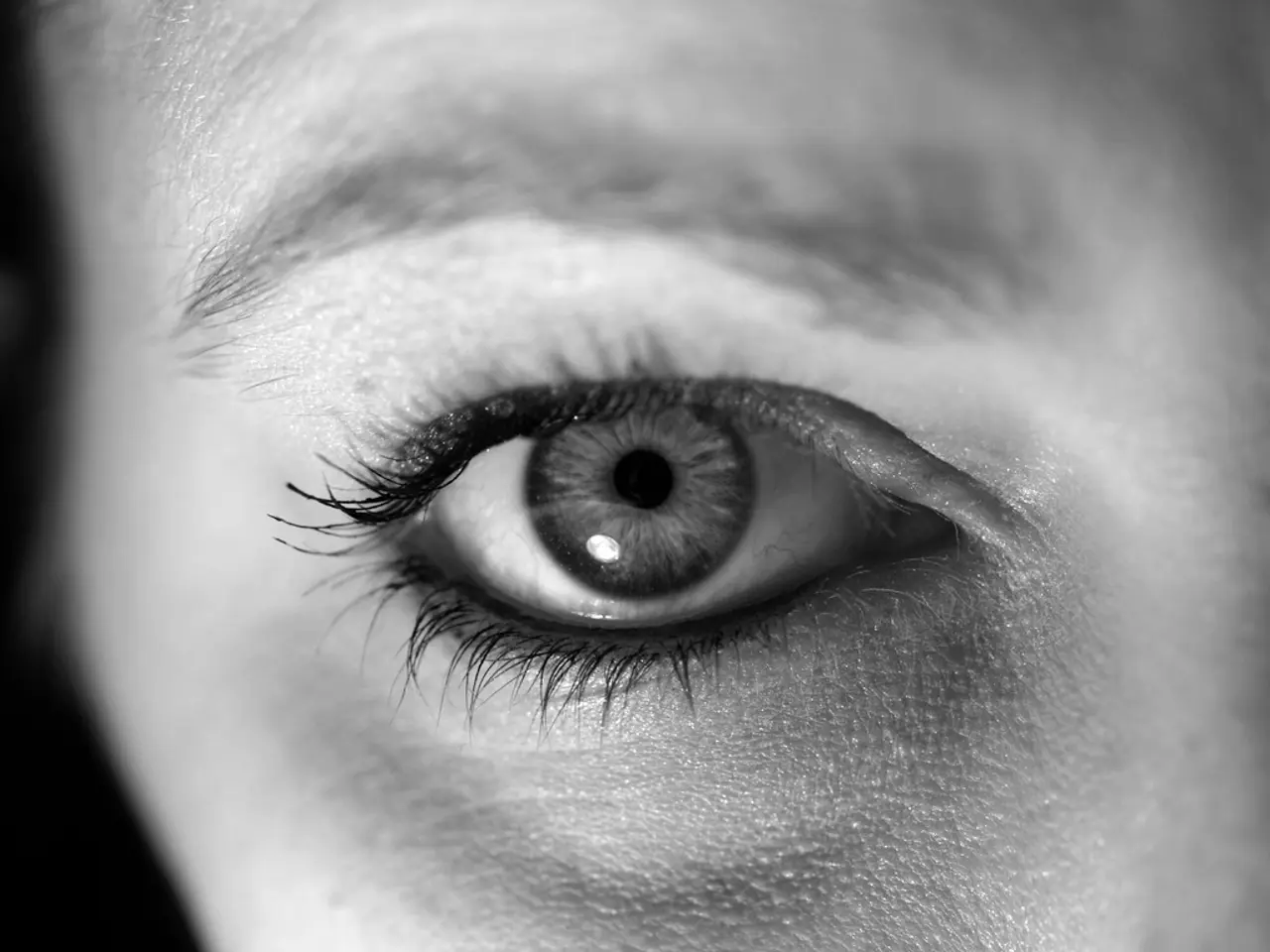Nasal Blemish Explanation: Causes and Remedies
Red spots on the nose can be a cause for concern, as they may indicate various skin conditions, including skin cancers. This article aims to provide a clear and concise overview of the common causes, typical appearances, treatments, and when to seek medical advice for such spots.
Two types of non-melanoma skin cancers, basal cell carcinoma (BCC) and squamous cell carcinoma (SCC), are most commonly associated with red spots on the nose. Chronic sun exposure, being a sun-exposed area, is the primary cause of these skin cancers[1][5]. SCC can also arise from scars, chronic ulcers, or skin injury sites.
Basal cell carcinoma often appears as a pearly or waxy bump, sometimes red, and can bleed or crust. Squamous cell carcinoma can look like a persistent, scaly red patch with irregular borders that sometimes crusts, bleeds, or appears wart-like or rough[1][5]. Melanoma, while less common on the nose, can present as a brownish spot with irregular borders, uneven color, or changes in size and can sometimes bleed[3].
Early-stage skin cancers such as BCC and SCC are highly treatable, with options including surgical excision, Mohs surgery, cryotherapy, topical treatments, or radiation in some cases[1]. Early detection is crucial to prevent progression or spread, particularly for SCC and melanoma, which can invade deeper tissues or metastasize if untreated[1][3].
If you notice a red, scaly, or crusty spot that does not heal or keeps bleeding or crusting, a new bump or lump that is pearly, waxy, or red and persistent, any growth with irregular borders or color changes, or a sore that lasts more than a few weeks or keeps returning, you should seek evaluation by a healthcare professional, ideally a dermatologist[3][5][1].
Regular skin self-exams and annual professional skin checks are recommended to catch suspicious spots early, especially if you have a history of sun exposure or previous skin cancers[3].
It's essential to note that other conditions, such as spider angiomas, acne, rosacea, Systemic lupus erythematosus, and moles, can also cause red spots on the nose. Pregnant women and those who are severely malnourished are at greater risk of developing spider angiomas. Melanoma is one type of skin cancer that may have red tones and can start as a mole. Freckles, small spots on the skin caused by excess melanin, can appear red to light brown.
In summary, a persistent red spot on the nose that is scaly, crusted, bleeds, or changes should prompt a dermatologist visit for prompt diagnosis and treatment to rule out or manage skin cancer effectively. Early detection and treatment offer the most favorable outcomes[1][3][5]. For acne, treatments include benzoyl peroxide and salicylic acid to reduce oil and acne-causing bacteria. Moles and freckles do not usually require treatment, but sunscreen application is recommended to limit sun exposure.
- Ulcerative colitis, a type of inflammatory bowel disease, can lead to skin manifestations, such as pyoderma gangrenosum—an ulcerative lesion that may appear on the skin, often resembling a sore or a boil.
- HIV, the virus that causes AQ (Anti-retroviral Quotient), can impact various aspects of a person's health, including their skin, potentially causing conditions like Kaposi sarcoma, a type of skin cancer often appearing as red or purple lesions.
- Dermatology, the branch of medical science that specializes in skin health, plays a crucial role in diagnosing and treating various skin conditions, including atopic dermatitis—a chronic inflammation of the skin characterized by itchy, red, and scaly patches.
- Ankylosing spondylitis, a type of inflammatory arthritis, may rarely display skin manifestations, such as psoriasis-like lesions or a rash around the eyes or mouth.
- Psoriasis, a chronic skin condition, can present with red, scaly, and sometimes itchy patches, often found on elbows, knees, and scalp; however, it can also affect the nose and other areas of the skin.
- Psoriatic arthritis, a type of arthritis that occurs in people with psoriasis, can cause inflammation and swelling of the joints, as well as psoriasis-like skin lesions.
- Predictive models in science aide in identifying potential risk factors and early signs of medical conditions, including skin cancers, thus helping to promote health-and-wellness by enabling early prevention and treatment.
- Spondylitis, an umbrella term for inflammation of the vertebrae, can also present with skin conditions of its own, such as erythema annulare centrifugum—a red, ring-shaped rash that often appears on the trunk or proximal limbs.
- Skincare, an essential aspect of maintaining good overall health, encompasses various practices such as maintaining sun protection, moisture, and cleansing, and it plays a vital role in preventing and managing skin conditions like moles, freckles, and acne.
- Medical-conditions, while sometimes concerning, can often be effectively managed when diagnosed and treated promptly, implying that knowledge about these conditions and seeking professional help when necessary contributes significantly to health-and-wellness.




